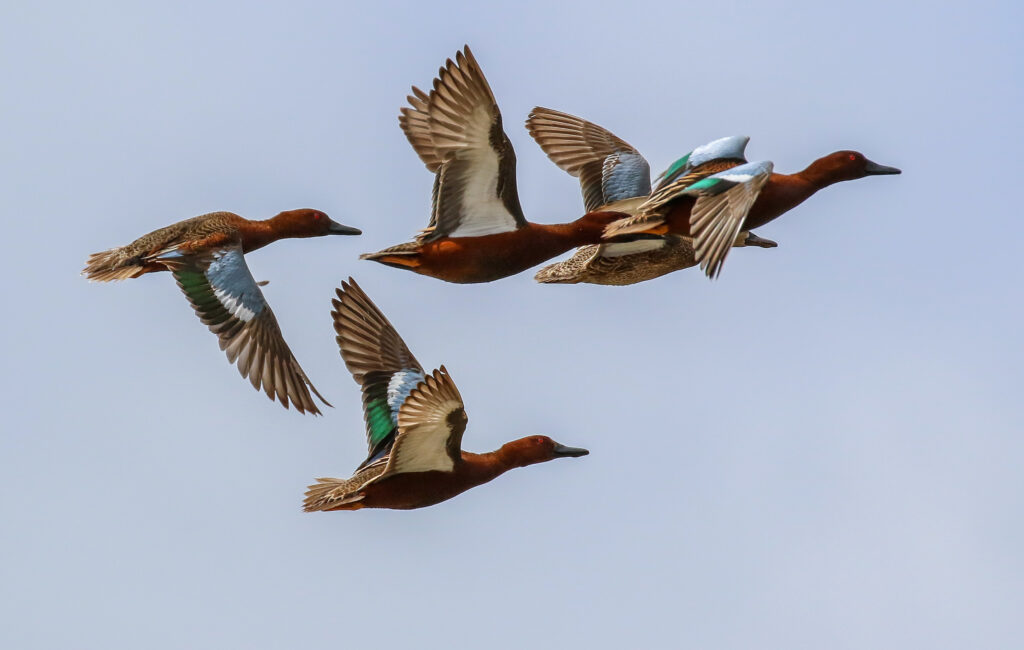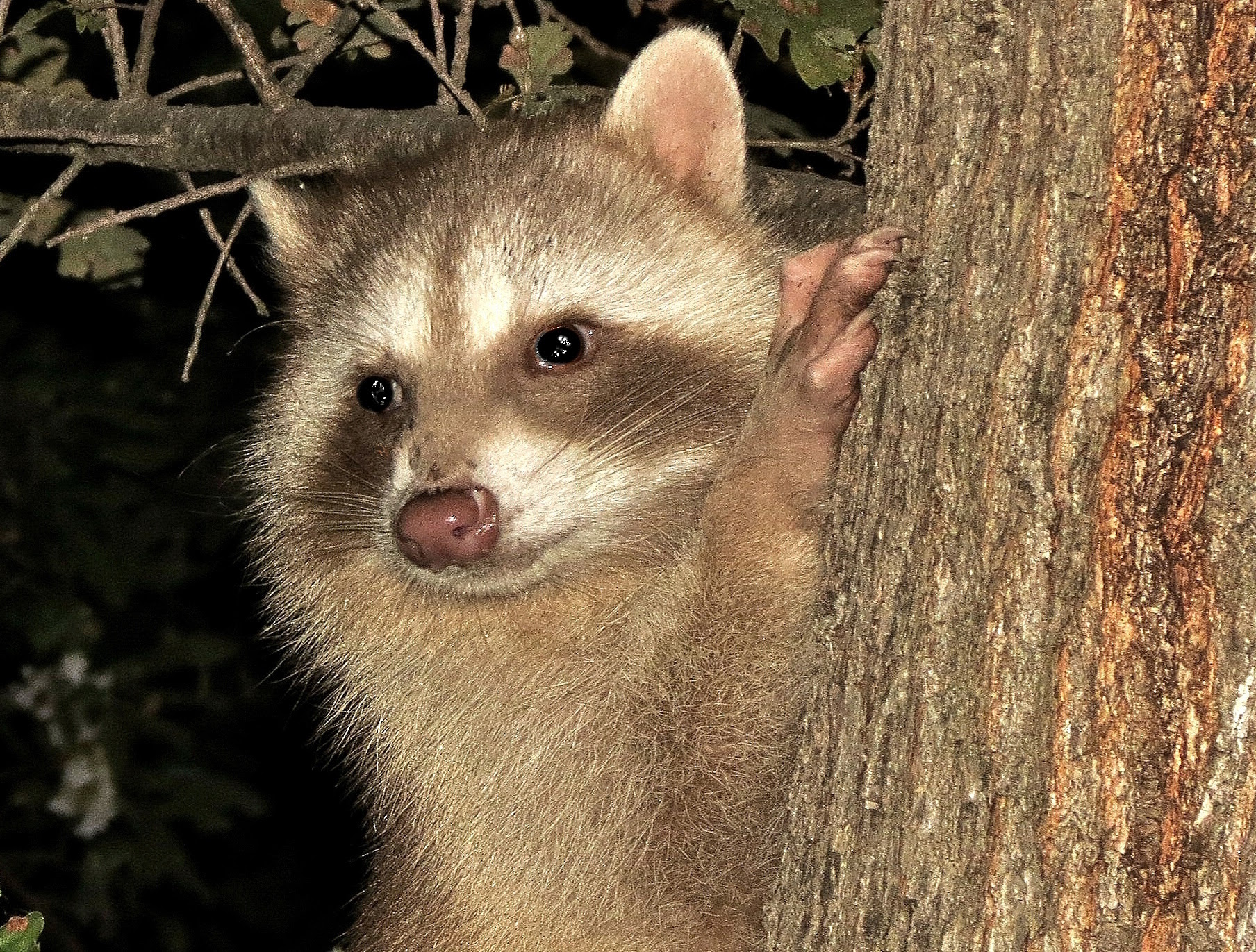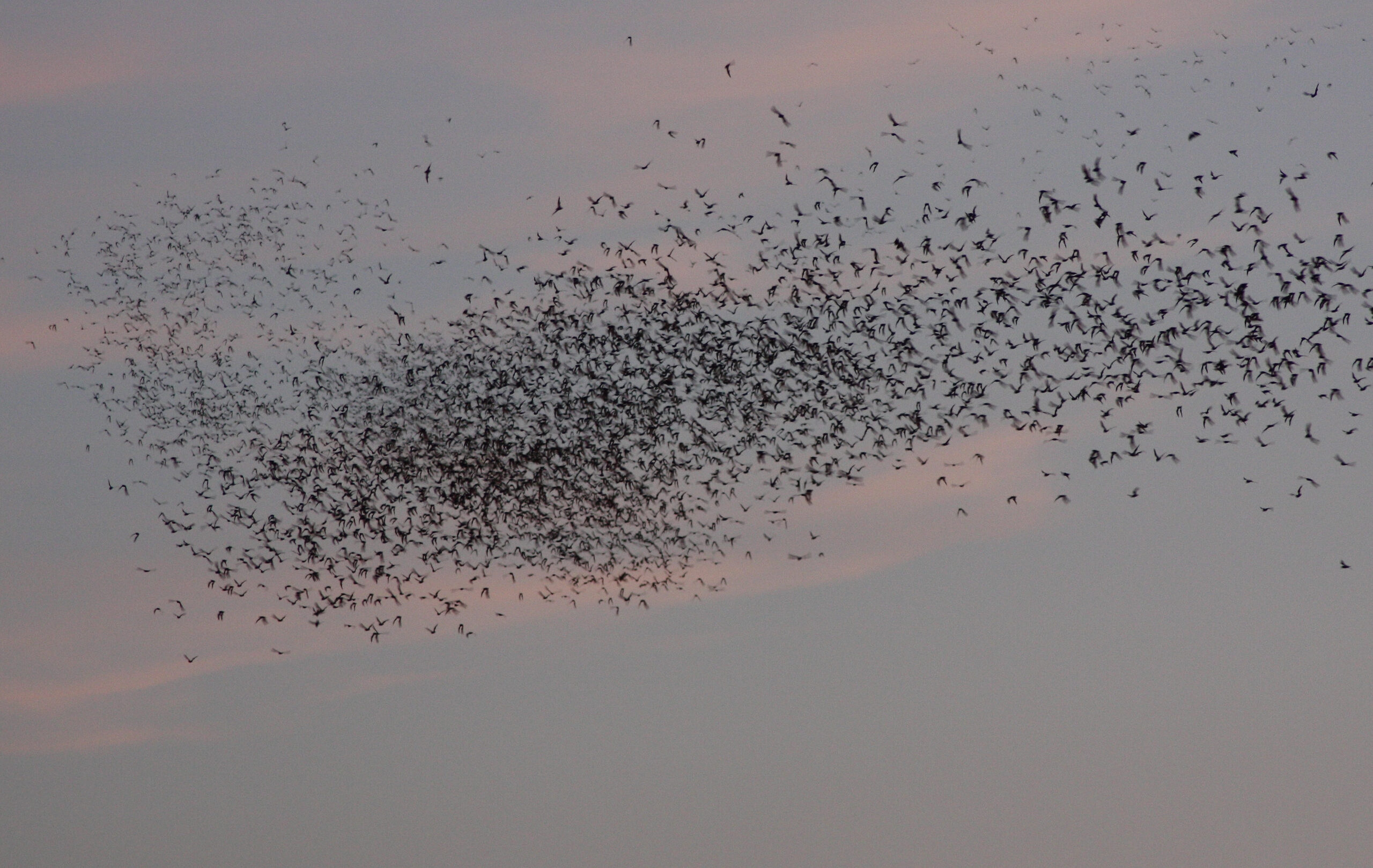Birds famously fly long distances. Many ducks in the Yolo Bypass Wildlife Area spend their summers 2,000 miles away in the wetlands of the western boreal forest of Canada. Snow geese fly 3,000 miles from the Arctic tundra to the Bypass. Arctic terns are the champions. One fitted with a geolocator flew 30,000 miles from England’s Farne Islands to Antarctica. Birds also fly impressively long periods without touching down. A migrating northern pintail made a non-stop flight of 1,864 miles. The bar-tailed godwit flies 7,000 miles from the Arctic to New Zealand in eight days without stopping to rest, drink, or feed. Alpine swifts fly for 200 days without touching a solid surface. After common swifts raise young for two months in Scandinavia, they fly to Africa and some will remain in flight for the next ten months (Hedenström, A., et al. 2016. Curr. Biol. 26:3066-3070). Without ever touching down! For ten months! They eat, drink, and mate in the air. Do any of these birds sleep? Have they figured out a way to forgo sleep altogether?

Photo by Tim Dietler
Proof that birds can fly nonstop for long periods of time came from tiny, motion detecting accelerometers fixed to the legs of a sample of birds. These are the devices that steer mobile phone users around unfamiliar streets. But to find out if birds sleep requires electroencephalogram (EEG) devices attached to the bird’s scalp to measure brain activity. Early work focused on captive mallards, which often rest with one eye opened. Brain wave patterns demonstrated that mallards were capable of unihemispheric sleep, meaning that one half of the brain, or hemisphere, was asleep and the other half was awake. Each hemisphere is connected to the eye on the opposite side of the head. The eye controlled by the active hemisphere is open and functioning; consequently, the bird responds to movement or noise. Rest alternates between hemispheres (Rattenborg, N. 1999. Nature 397:397–398). Dolphins use the same kind of sleep. They stay alert with half of their brain while the other half falls into sleep. This enables dolphins to sleep with one eye open, always on the lookout for predators. Thus, they are alert for their entire lives. Other cetaceans, sea lions, and manatees also have this kind of sleeping pattern. Unihemispheric sleep is slow wave sleep, a deep state of sleep in which rapid eye movement (REM) sleep does not occur. In REM sleep the brain is active and most muscles become temporarily paralyzed. It is possible that dolphins never experience REM sleep, because muscle paralysis would be life threatening to an animal that has to physically move to the surface to breathe.
Determining if a bird is awake or asleep during flight requires a small EEG device that doesn’t impede the bird in flight. New technology in miniaturization made possible EEG devices that could be attached to birds. Researchers chose to study female frigatebirds nesting on the Galapagos Islands. They were easy to catch and handle because animals on the Galapagos Islands often don’t have a fear of humans. Also, to study flight in birds you would want to pick a candidate species that flies for extended periods of time. Again, frigatebirds fit the bill. They spend up to two months flying nonstop over the ocean in search of prey. And you can be sure that they are not resting on the water at any time because they can’t. Frigatebirds can’t swim, despite being an ocean-going animal. They don’t have oily feathers that shed water. If the feathers get wet, the bird gets heavy and can’t get back into the air. Frigatebirds are also relatively large, so an EEG device can be worn without affecting the bird’s behavior.
The research found that frigatebirds sleep on the wing for about 10 seconds at a time, but sometimes more, for a total of 45 minutes in 24 hours (Rattenborg, N., et al. 2016. Nature Communication. DOI: 10.1038/ncomms12468). To help them stay aloft for weeks at a time, frigatebirds have evolved the ability to engage in unihemispheric, slow wave sleep. Usually, the birds had one eye open to remain aware of their location and to avoid collisions with other birds. The brief naps were made while the birds were spiraling upwards on thermal drafts or while gliding, which allowed them to rest while doing the minimal amount of work needed to keep flying. They were able to glide and soar with ease because frigatebirds have the largest wing surface area for their body weight of any bird. When only the right hemisphere was asleep, the birds circled to the right, and in the opposite direction when the left hemisphere was asleep. Occasionally, the birds also entered into REM sleep, when both hemispheres were asleep. That might seem risky, but REM sleep lasted for only a few seconds and even if complete loss of muscle tone occurred, frigatebirds reflexively maintain their wings in a flying position. It is surprising that frigatebirds don’t require more sleep while they are foraging. On the nest, they sleep for about 12 hours a day in one-minute bursts. How they’re able to function with such little sleep while flying remains a mystery.
Bird migration is one of the most remarkable feats in the animal kingdom. And now we know there are birds that stay aloft for ten months. It makes one feel tired just thinking about it! Many questions remain unanswered. Do songbirds sleep on migrations? They only briefly rest their wings between periods of flapping. And what about geese, which seem to flap their wings continuously? Do they forgo sleep altogether? Perhaps frigatebirds are not the only birds to have figured out how to get sleep, thought to be a universal need for brainy creatures.




